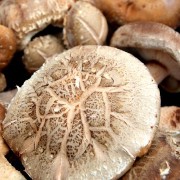 Photo: Getty Images
Photo: Getty Images
One of the eight most common types of food allergies is an allergy to tree nuts. The name “tree nuts” is used to distinguish these kinds of nuts from peanuts and other legumes that grow underground. Tree nuts include walnuts, pecans, cashews, almonds, Brazil nuts, hazelnuts, macadamia nuts, pistachios... and the list goes on.
Food Allergy Basics
If you have been diagnosed with tree nut allergy, your immune system is geared up to react any time you come in contact with these kinds of nuts. When you have an allergy, your body registers the allergen (the thing you are allergic to) as being something harmful. In the case of food allergies, the body releases a chemical called histamine that causes tissues to swell. This can lead to a runny nose or hives. In the digestive tract, it can cause nausea, diarrhea, and vomiting. It can also cause the tissues in the mouth, throat, and windpipe to swell which can make it difficult to breathe. This is known as anaphylaxis or anaphylactic shock, which can be deadly.
Some people with tree nut allergy are allergic to one specific kind of nut. But many people with this allergy are allergic to several different kinds of tree nuts. If you have been diagnosed with tree nut allergy, you will need to be careful to avoid all types of tree nuts unless your allergist concludes that some nuts are safe for you. Many people who are allergic to tree nuts are also allergic to peanuts, so care should be taken with all types of nuts.
Avoiding Tree Nuts
Because tree nut allergy is such a common food allergies in the United States, the United States Food and Drug Administration requires all food manufacturers to clearly label products that contain tree nuts. You will need to watch for phrases showing nuts are in the food as well as labeling that nuts are used on the same equipment or in the same processing facility.
In restaurants, you will need to tell your server that you are allergic to nuts and ask that the kitchen staff use precautions to make sure tree nuts are not included in your meal and to avoid cross-contamination in the preparation of your meal. Cross-contamination occurs through something that is shared, such as spoons, pans, or even serving trays. If the item first touches a food containing nuts then touches your meal, cross-contamination has occurred and you could have a reaction.
In addition to the foods you eat, you will need to be careful about other sources of tree nuts that you might come in contact with. Pet foods and treats including food for dogs, livestock, and hamsters may contain nuts. In addition, nut particles may be present in the saliva of dogs or other animals after they eat. Nuts can also be found in some cosmetics and even in bug traps.
In some foods, nuts are used as a topping or “extra” ingredient which can easily be left out of the recipe. But be wary of homemade baked goods. Even if you are offered “nut-free” cookies, the cook may have used the same spoon to mix a batch with nuts which would cross-contaminate the nut-free dough. You will also need to be wary of sauces which may use peanuts or peanut butter as a thickener. In general, Asian, Mexican, and Mediterranean foods often contain nuts.
The FDA considers coconut to be a tree nut for purposes of product labeling. Allergies to coconuts are very rare, so talk to your allergist to see if you are safe to eat coconut. Some safe alternatives for snacking may include sunflower seeds, pumpkins seeds, and sesame seeds, which are not considered to be tree nuts.
Sources:
KidsHealth.org
About.com: Tree Nut Allergies






Add a Comment1 Comments
Another place that many people are unfamiliar with, avoiding tree nuts has got to be verified on an ingredient label if it says natural flavorings. Often this term is just another way of saying it could have been nut oils, peanut oils, seed oils etc.. Because the manufacturer does not specify, call their customer service line and verify the source of this ingredient before you try to use it.
December 1, 2010 - 3:27pmFor many other helpful hints and tips, check at :
(Link removed by EmpowHER moderator.)
This Comment